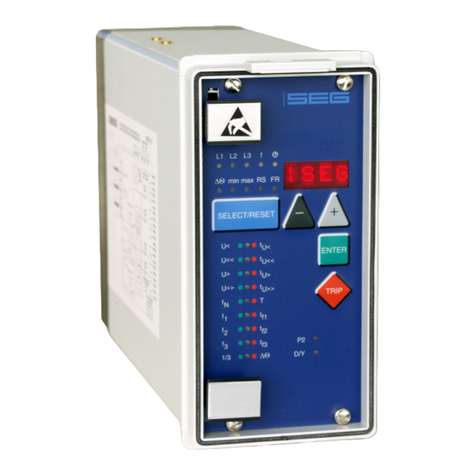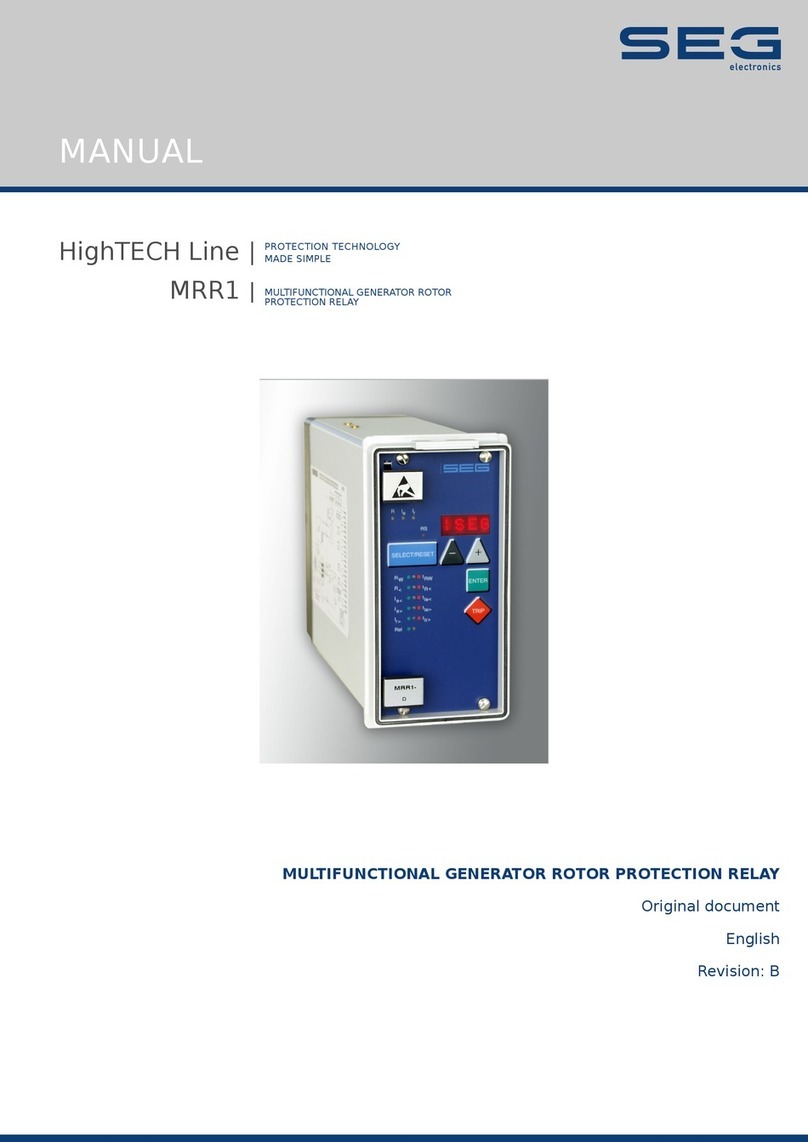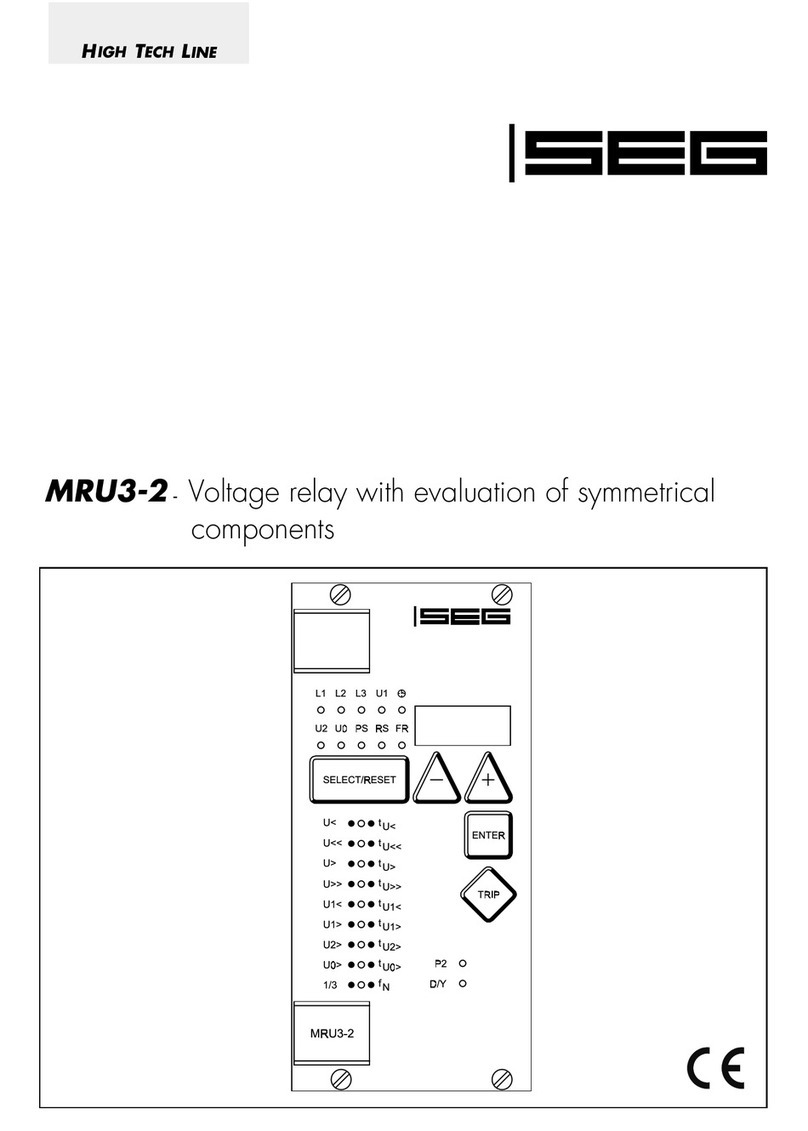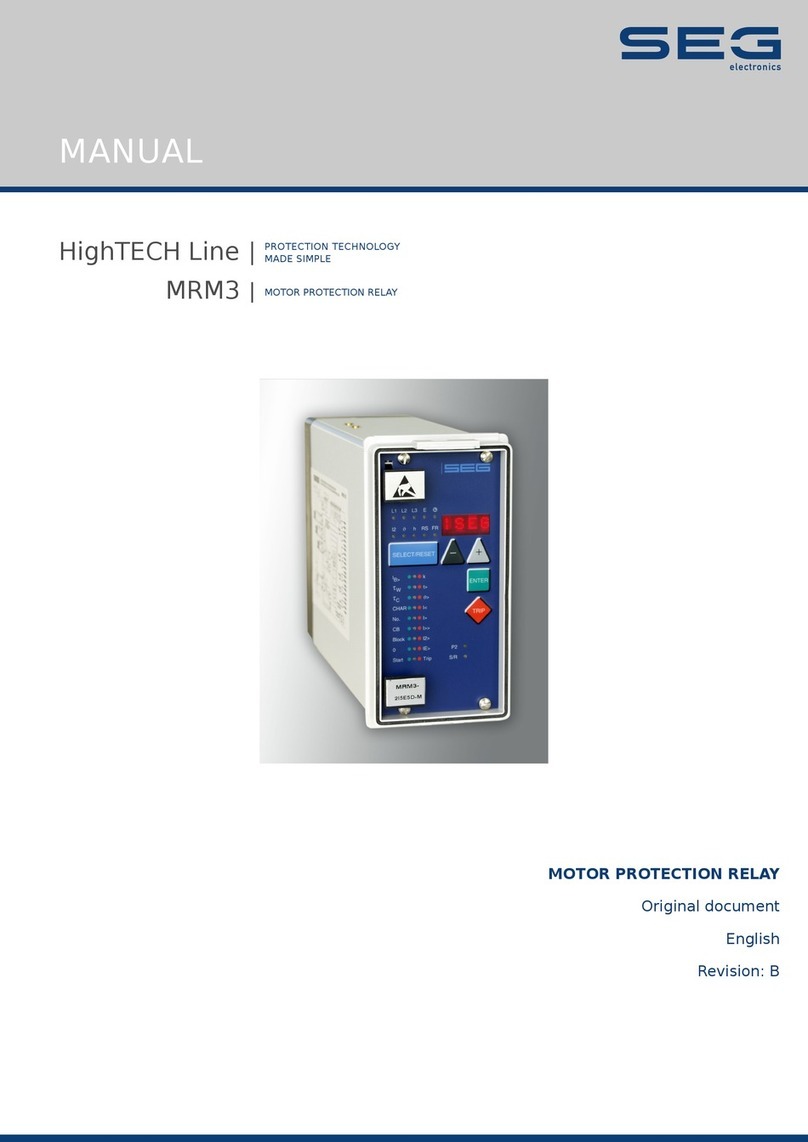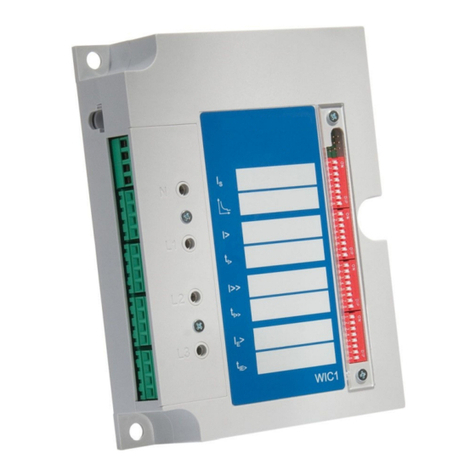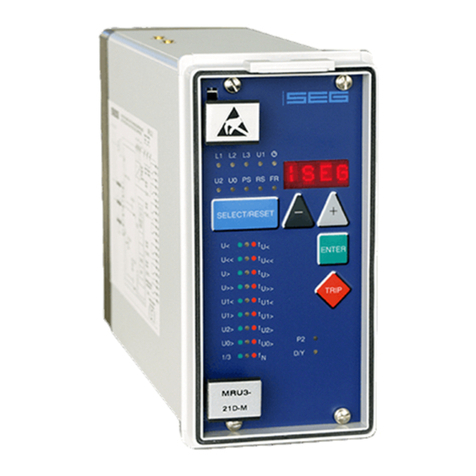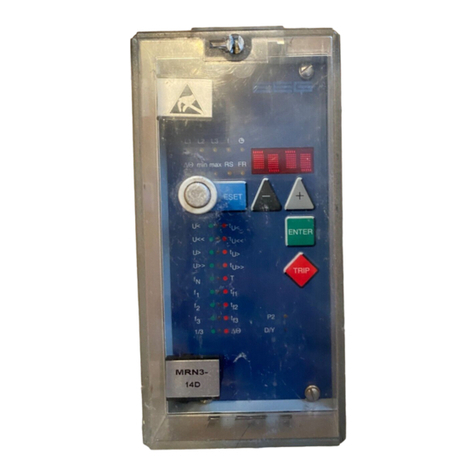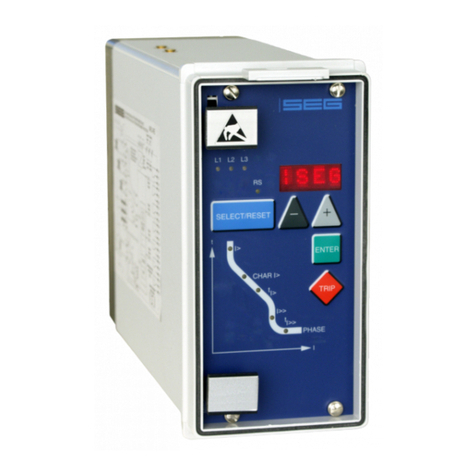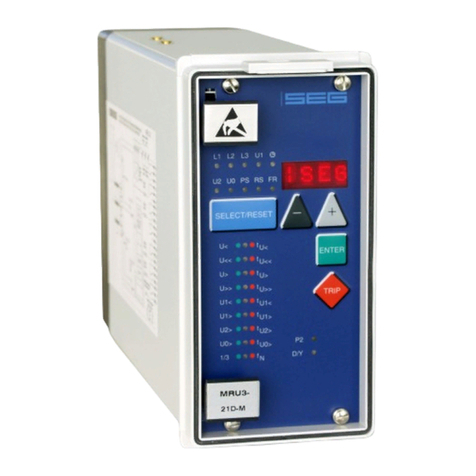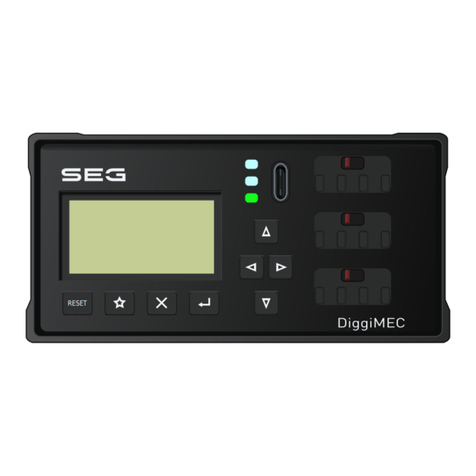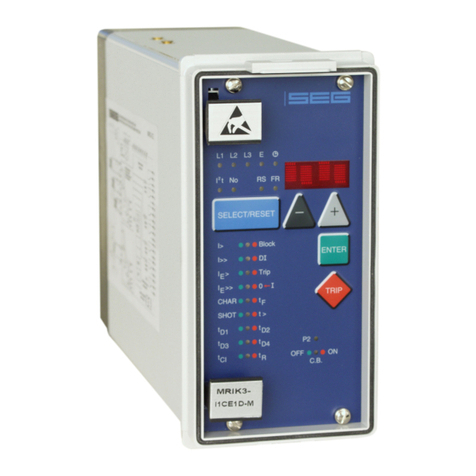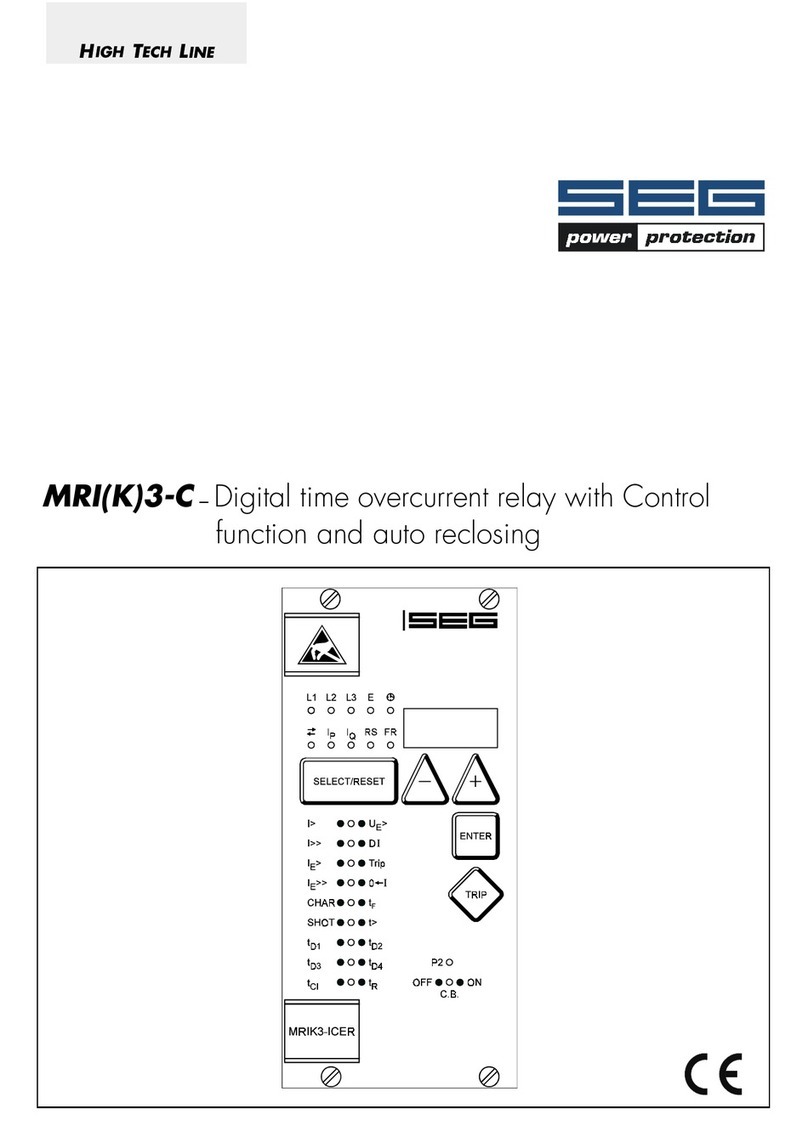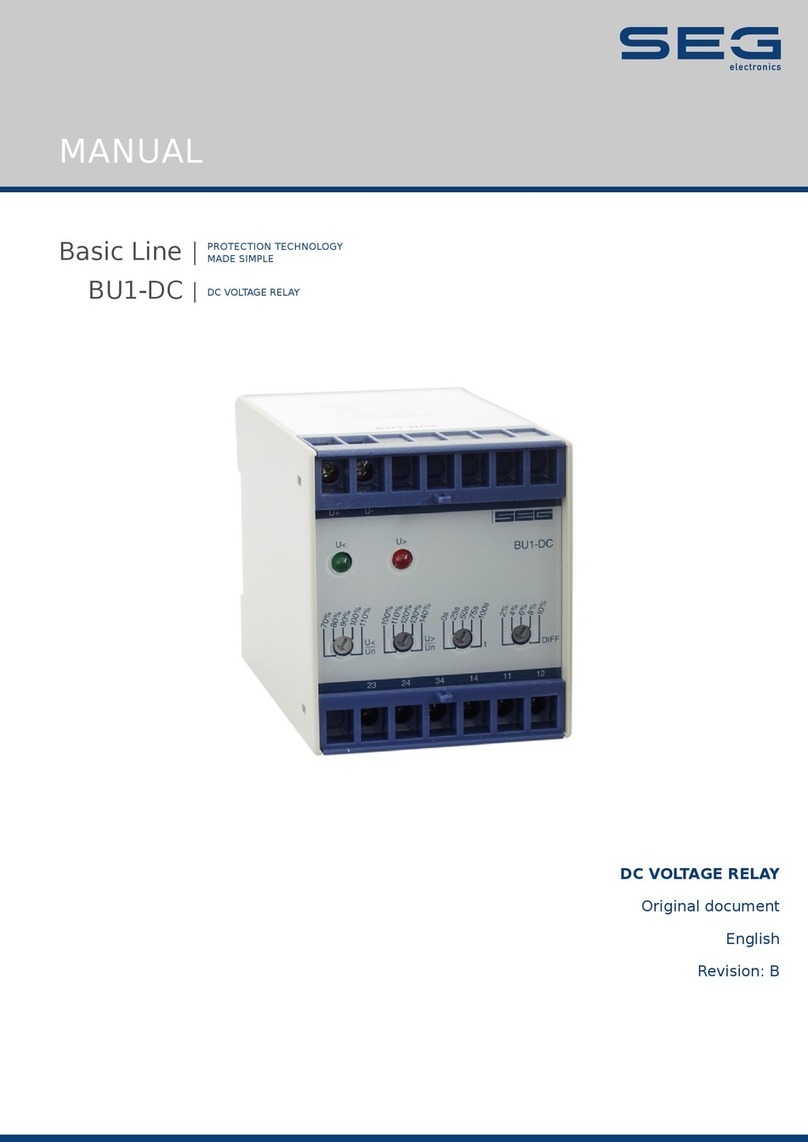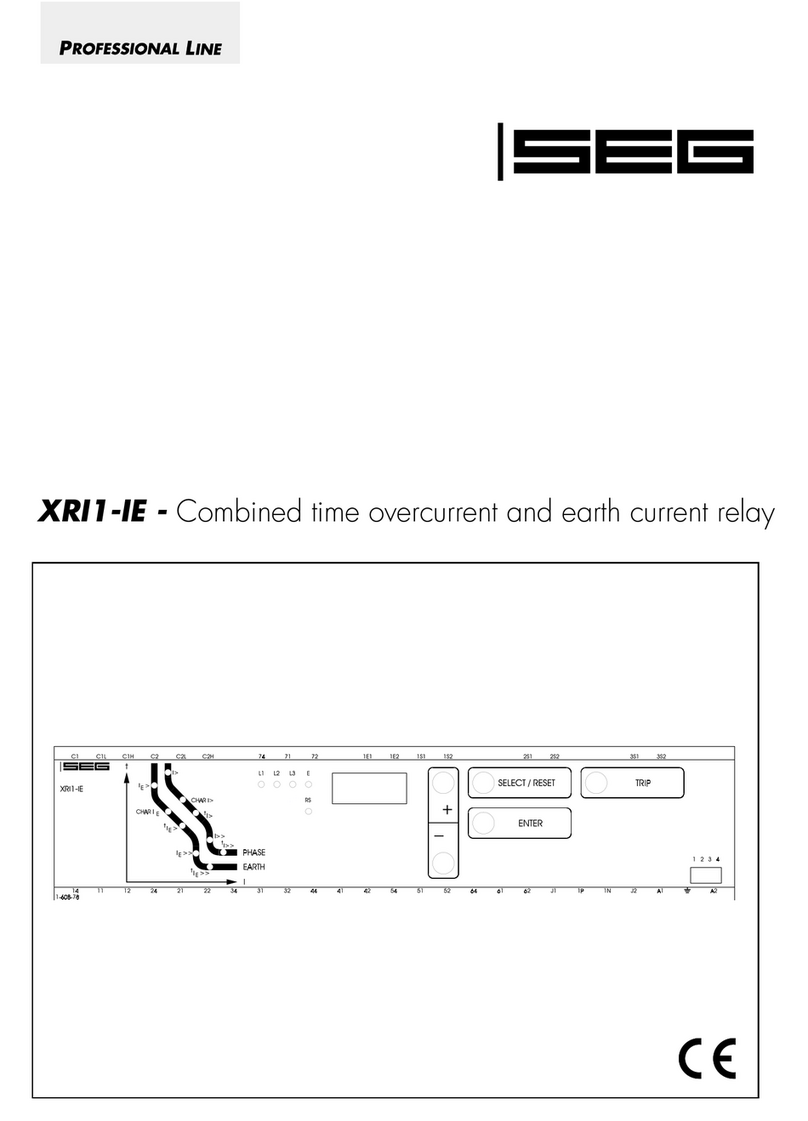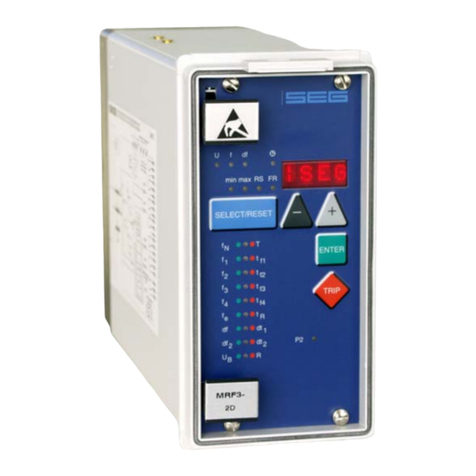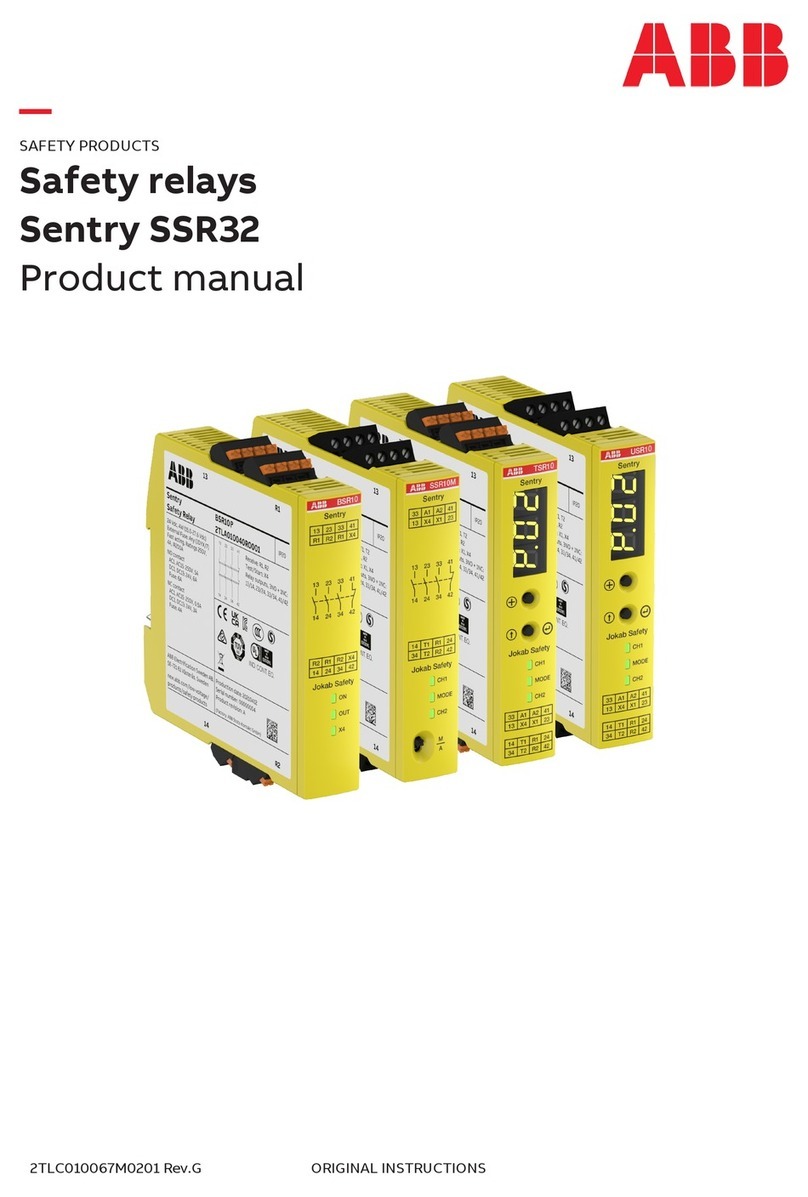
4 TD_MRI1_06.05_GB
1 Introduction and application
The MRl1 digital multifunctional relay is a universal
time overcurrent and earth fault protection device in-
tended for use in medium-voltage systems, either with
an isolated/compensated neutral point or for networks
with a solidly earthed/resistance-earthed neutral point.
• The protective functions of MRI1 which are imple-
mented in only one device are summarized as fol-
lows:
• Independent (Definite) time overcurrent relay.
• Inverse time overcurrent relay with selectable charac-
teristics.
• Integrated determination of fault direction for appli-
cation to doubly infeeded lines or meshed systems.
• Two-element (low and high set) earth fault protection
with definite or inverse time characteristics.
• Integrated determination of earth fault direction for
application to power system networks with isolated
or arc suppressing coil (Peterson coil) neutral
earthing. (ER/XR-relay type).
• Integrated determination of earth short-circuit fault di-
rection in systems with solidly-earthed neutral point or
in resistance-earthed systems (SR-relay type).
Furthermore, the relay MRI1 can be employed as a
back-up protection for distance and differential protec-
tive relays.
A similar, but simplified version of overcurrent relay
IRI1 with limited functions without display and serial in-
terface is also available.
Important:
For additional common data of all MR-relays please
refer to manual "MR - Digital Multifunctional relays".
On page 41 of this manual you can find the valid soft-
ware versions.
2 Features and characteristics
• Digital filtering of the measured values by using dis-
crete Fourier analysis to suppress the high frequence
harmonics and DC components induced by faults or
system operations
• Selectable protective functions between:
definite time overcurrent relay and
inverse time overcurrent relay
• Selectable inverse time characteristics according to
BS 142 and IEC 255-4:
Normal Inverse
Very Inverse
Extremely Inverse
• Reset setting for inverse time characteristics select-
able
• High set overcurrent unit with instantaneous or de-
finite time function.
• Two-element (low and high set) overcurrent relay
both for phase and earth faults.
• Directional feature for application to the doubly in-
feeded lines or meshed systems.
• Earth fault directional feature selectable for either iso-
lated or compensated networks.
• sensitive earth fault current measuring with or without
directional feature (X and XR-relay type
• Determination of earth short-circuit fault direction for
systems with solidly-earthed or resistance-earthed
neutral point.
• Numerical display of setting values, actual mea-
sured values and their active, reactive components,
memorized fault data, etc.
• Withdrawable modules with automatic short circuit
of C.T. inputs when modules are withdrawn.
• Blocking e.g. of high set element (e.g. for selective
fault detection through minor overcurrent protection
units after unsuccessful AR).
• Relay characteristic angle for phase current direc-
tional feature selectable
• Dwell time selectable
• Switch failure protection
• Storage of tripping values and shut-down times
(not ER/XR versions) (t
CBFP
) of eight failure events
• Free assignment of output relays
• Serial data exchange via RS485 interface possible;
alternatively with SEG RS485 Pro-Open Data Proto-
col or Modbus Protocol
• Suppression of indication after an activation
(LED flash)
